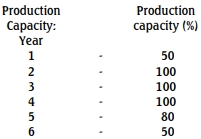- 20 Marks
FM – May 2023 – L3 – Q4 – Financing Decisions and Capital Markets
Evaluate the implications of equity financing decisions, analyze pre-emptive rights, estimate share price, and explore factors affecting price movement.
Question
The directors of Kenny plc wish to make an equity issue to finance an ₦800 million expansion scheme, with an expected net present value of ₦110 million. It is also to re-finance an existing 15% term loan of ₦500 million and pay off a penalty of ₦35 million for early redemption of the loan.
Kenny has obtained approval from its shareholders to suspend their pre-emptive rights and for the company to make a ₦1,500 million placement of shares, which will be at the price of 185 kobo per share. Issue costs are estimated to be 4 per cent of gross proceeds. Any surplus funds from the issue will be invested in commercial paper, which is currently yielding 9 per cent per year.
Kenny’s current capital structure is summarised below:
| ₦ million | |
|---|---|
| Ordinary shares (25 kobo per share) | 800 |
| Share premium | 1,120 |
| Revenue reserves | 2,310 |
| Total Equity | 4,230 |
| 15% term loan | 500 |
| 11% bond | 900 |
| Total Capital | 5,630 |
The company’s current share price is 190 kobo, and bond price is ₦102. Kenny can raise bond or medium-term bank finance at 10 per cent per year.
The stock market may be assumed to be semi-strong form efficient, and no information about the proposed uses of funds from the issue has been made available to the public.
Taxation may be ignored.
Required:
a. Discuss FOUR factors that Kenny’s directors should have considered before deciding which form of financing to use. (6 Marks)
b. Explain what is meant by pre-emptive rights, and discuss their advantages and disadvantages. (4 Marks)
c. Estimate Kenny’s expected share price once full details of the placement, and the uses to which the finance is to be put, are announced. (8 Marks)
d. Suggest two reasons why the share price might not move to the price that you estimated in (c) above. (2 Marks)
Find Related Questions by Tags, levels, etc.
- Tags: Equity Issue, Market Efficiency, NPV, Pre-emptive rights, Share Valuation
- Level: Level 3



